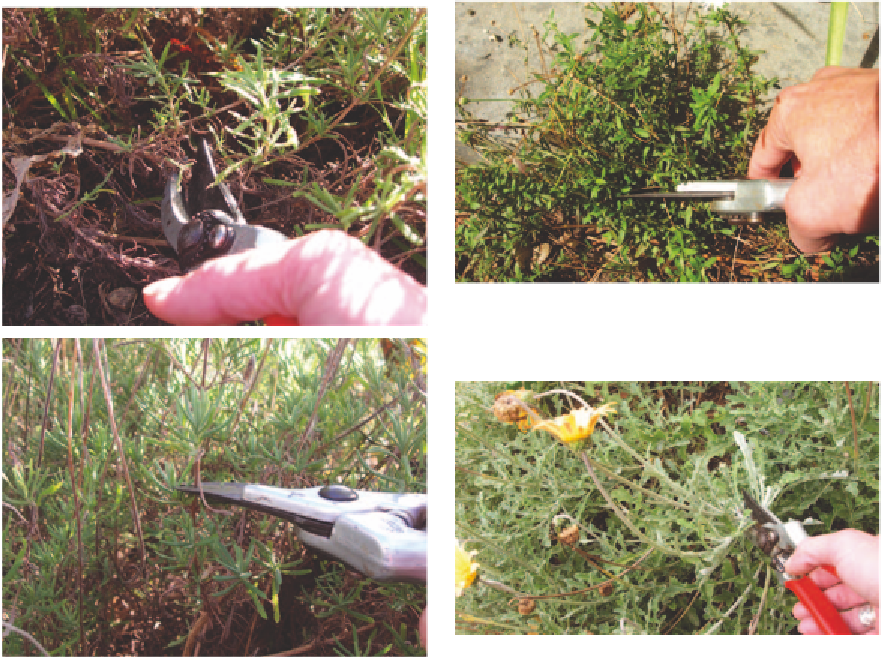Agriculture Reference
In-Depth Information
branching lower down in the bush. Shorten
back long stems to strong growth (see
Figure 4.13).
depending on the season, they may not
resprout from old wood. A major prune such
as this can be staged. It will look odd, but cut
half of the shrub and leave the other half
until the pruned section is showing vigorous
growth. This sort of operation is best
performed in spring after the risk of frost.
It is a good idea to pinch out the tip of all new
growth at this point (see Figure 3.7). This
process can be repeated every few months.
However, if you are facing an almost
exhausted shrub of this kind, there may be
very little viable growth to prune to once the
flowers are removed. This can be problematic.
The removal of so much growth will leave
very little leaf for the shrub to survive on, and
Groundcovers that barely stop flowering can
be treated more brutally but with the same
good effect. They can be grasped by their
longer stems and simply sheared off, leaving
green stems at the base (see Figure 4.14).
(a)
Figure 4.14
Cut down the old stems almost to the
ground, making sure there is leafy growth below the cut.
(b)
Figure 4.15
Plants with large and long flowering stems
can be cut back in the same manner as Figure 4.14. To
lessen the aesthetic down time, prune each strong stem
back to a side shoot.
Figure 4.13
Cut long lanky growth back to a strong side
shoot (a). Shorten back spent flowering stems to healthy
growth (b).

